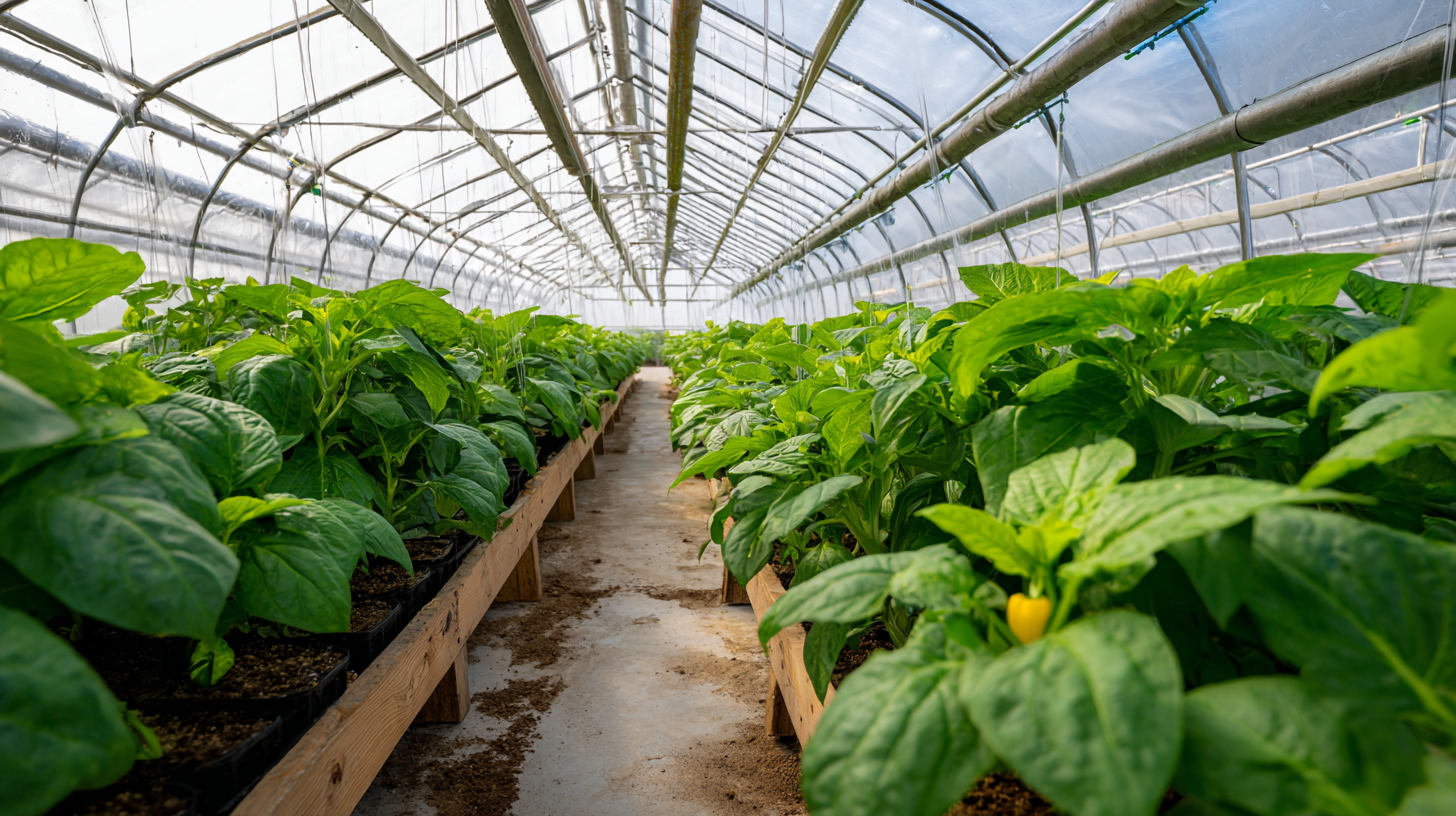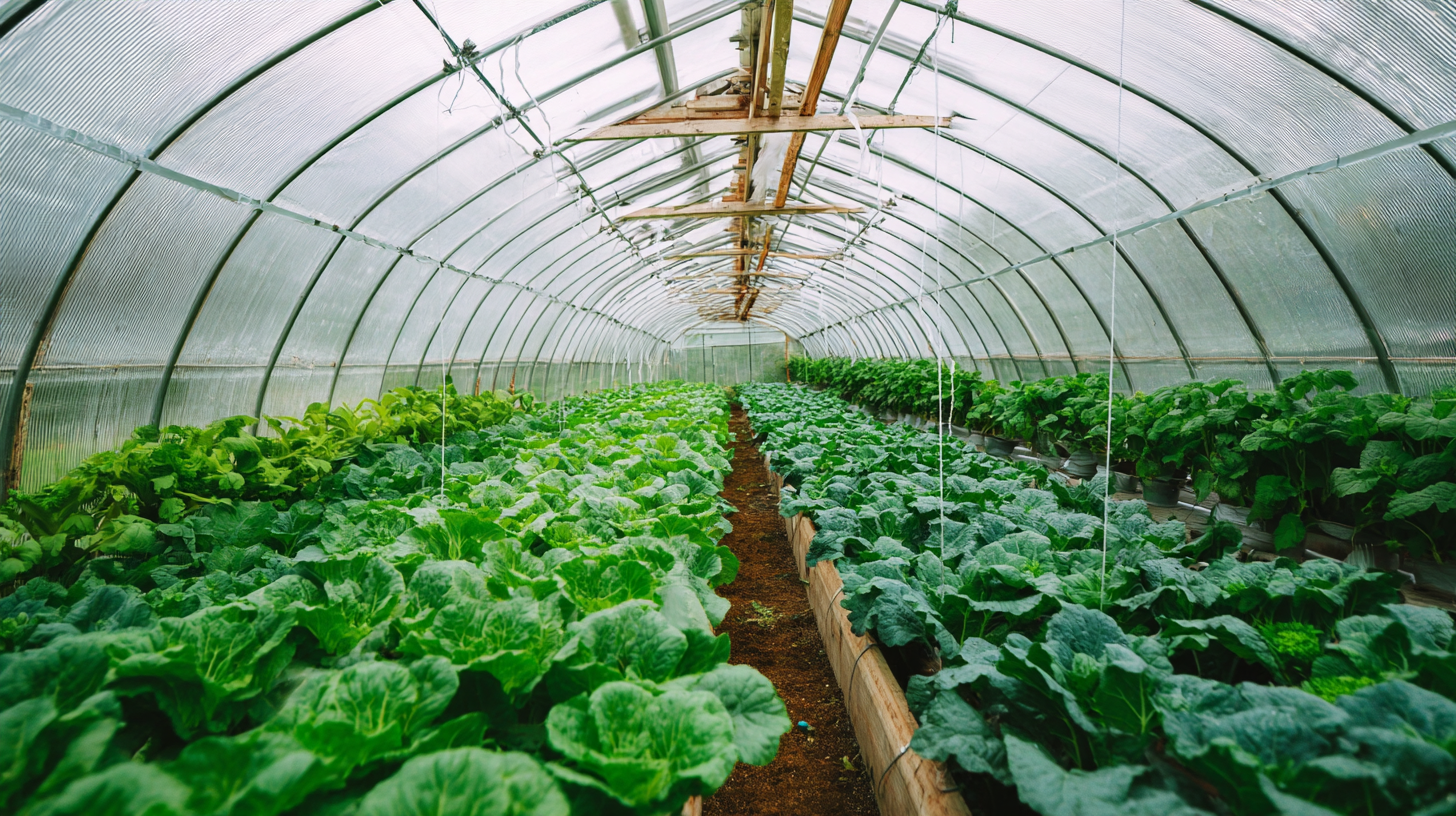
10 Advantages of Best Tunnel Greenhouse in Urban Farming for Higher Yields
In the rapidly evolving field of urban farming, the adoption of Tunnel Greenhouses has become a pivotal strategy for maximizing agricultural yields in limited spaces. According to a report by the American Society for Horticultural Science, urban farms utilizing tunnel greenhouses can increase crop production by up to 30% compared to traditional growing methods. This innovative approach not only enhances the efficiency of space utilization but also optimizes controlled climate conditions, leading to improved plant health and productivity. As urban populations continue to rise, and with the increasing demand for sustainable food sources, the benefits of implementing tunnel greenhouses in urban settings are becoming increasingly apparent.

This blog will explore 10 advantages of the best tunnel greenhouse solutions, showcasing how they can significantly contribute to higher yields and a sustainable urban farming future.
Advantages of Tunnel Greenhouse in Maximizing Urban Farming Efficiency
 Urban farming is rapidly gaining traction as cities strive to embrace sustainable practices and ensure food security. One of the most effective tools in this endeavor is the tunnel greenhouse, which offers a multitude of advantages for maximizing farming efficiency. By providing a controlled environment, tunnel greenhouses help mitigate the effects of urban pollution and extreme weather conditions, allowing for consistent plant growth throughout the year.
Urban farming is rapidly gaining traction as cities strive to embrace sustainable practices and ensure food security. One of the most effective tools in this endeavor is the tunnel greenhouse, which offers a multitude of advantages for maximizing farming efficiency. By providing a controlled environment, tunnel greenhouses help mitigate the effects of urban pollution and extreme weather conditions, allowing for consistent plant growth throughout the year.
Furthermore, tunnel greenhouses can significantly improve resource management. They require less water compared to traditional farming methods, as the enclosed structure reduces evaporation and runoff. Additionally, they foster a microclimate that allows for the efficient use of natural sunlight while protecting crops from pests and diseases. This not only leads to higher yields but also reduces the need for chemical interventions, aligning perfectly with the organic farming movement. Consequently, urban farmers looking to optimize their crop production find tunnel greenhouses indispensable for achieving efficient and sustainable urban agriculture.
Key Features of Tunnel Greenhouses for Optimal Crop Growth
Tunnel greenhouses have become essential in urban farming, offering unique features that significantly enhance crop growth. One of the key characteristics of tunnel greenhouses is their ability to create a controlled environment. By protecting crops from harsh weather conditions, such as extreme temperatures and strong winds, these structures help maintain ideal humidity and temperature levels. This controlled setting allows for longer growing seasons and higher crop yields, making it a valuable asset for urban farmers.
Additionally, tunnel greenhouses utilize natural sunlight effectively while minimizing the risk of pest infestations. The design allows for ample sunlight to penetrate, fostering photosynthesis and promoting robust plant growth. At the same time, the enclosed structure helps deter pests, reducing the need for chemical pesticides. Urban farmers can thus cultivate healthier crops while adhering to organic practices, making tunnel greenhouses a sustainable option. Through these key features, tunnel greenhouses prove to be an innovative solution for maximizing productivity in urban farming environments.
Comparative Analysis: Tunnel Greenhouses vs. Traditional Farming Methods
The rise of urban farming has brought forth innovative techniques aimed at maximizing crop yields, with tunnel greenhouses emerging as a superior alternative to traditional farming methods. A comparative analysis reveals that tunnel greenhouses can increase yields by up to 30% compared to conventional open-field farming. According to a report from the Agricultural Research Service, the controlled environment of tunnel greenhouses allows for extended growing seasons and reduced exposure to pests and diseases, which directly translates to healthier plants and more robust harvests.
Moreover, tunnel greenhouses utilize space more efficiently than traditional farming practices. The National Center for Appropriate Technology highlights that urban areas often have limited arable land; however, tunnel greenhouses can be set up in smaller spaces, producing significantly more food per square foot. This adaptability not only facilitates local food production but also contributes to reduced transportation costs and lower carbon footprints. The combined effects of enhanced yields and space optimization position tunnel greenhouses as a leading solution for urban agriculture in the quest for sustainable food systems.
Tips for Selecting the Right Tunnel Greenhouse for Urban Spaces
When selecting the right tunnel greenhouse for urban spaces, several key considerations can significantly impact the effectiveness and productivity of urban farming. First, it is crucial to evaluate the size and dimensions of the available area. According to a report by the Agricultural Marketing Resource Center, urban farmers can optimize their yield by using modular tunnel greenhouses that can be scaled to fit specific spaces, allowing for maximized production without overcrowding. A well-planned layout can facilitate sufficient airflow and sunlight penetration, which are vital for healthy plant growth.
Another essential factor is the choice of materials. Durable and insulating materials, such as polycarbonate panels, can enhance the greenhouse's climate control, thus extending the growing season. The Greenhouse Manufacturers Association indicates that effective insulation can reduce heating costs by up to 30% during colder months, translating into higher yields and lower operational expenses. Additionally, integrating smart technology, such as automated irrigation systems and climate sensors, can further optimize resource use, enabling urban farmers to maximize their output while minimizing environmental impact.
10 Advantages of Best Tunnel Greenhouse in Urban Farming for Higher Yields
This bar chart illustrates the top ten advantages of using tunnel greenhouses in urban farming, highlighting their impact on achieving higher yields and optimizing farming practices in limited urban spaces.
Innovative Techniques to Enhance Yield in Tunnel Greenhouses
 Tunnel greenhouses have become a game-changer in urban farming, allowing growers to exploit innovative techniques that significantly enhance crop yields. According to a report by the United Nations Food and Agriculture Organization, urban agriculture can increase food production in cities by up to 30%, greatly reducing the food supply gap. Dynamic climate control systems, such as automated ventilation and humidity regulation, enable optimal growth conditions year-round, promoting healthier plants and higher output.
Tunnel greenhouses have become a game-changer in urban farming, allowing growers to exploit innovative techniques that significantly enhance crop yields. According to a report by the United Nations Food and Agriculture Organization, urban agriculture can increase food production in cities by up to 30%, greatly reducing the food supply gap. Dynamic climate control systems, such as automated ventilation and humidity regulation, enable optimal growth conditions year-round, promoting healthier plants and higher output.
Additionally, the integration of vertical farming within tunnel greenhouses maximizes space utilization. Research from the World Bank indicates that vertical farming can increase yield per square foot by as much as 10 times compared to traditional farming approaches. Coupled with hydroponics and aquaponics systems, urban farmers can achieve efficient nutrient delivery and water usage, drastically lowering resource consumption while boosting productivity. These advanced techniques not only foster better crop quality but also contribute to the sustainability of urban ecosystems, making tunnel greenhouses a vital component of modern urban agriculture.
